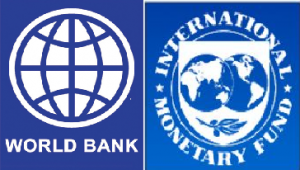The farmers of India have been dependent on Rainfall for immemorial time to irrigate farms and grow the harvest, but the lack of adequate rain is taking trolls not on the health of farmers but the well being of the Indian economy as well. The nonseasonal rains have impacted and plunged the crop production in India leading to scarcity of pulses, oil seeds, vegetables and fruits. This leads to a vicious circle of fall in incomes not only of the farmer but impacts the manufacturing and service sector as well. Due to fall in the income of farmers, the demand for tractors and two wheeler also fall. It further leads to a surge in downfall of IIIP in core manufacturing. In case of a monsoon failure, while ample stocks of rice and wheat can be released to kerb inflation, there is fear that the prices of commodities such as pulses and oil-seeds – where buffer stocks are not available in the central pool, and fruits & vegetables, where extended entrepot is not executable – could flare up. Similarly, some reliance on imports can be sought for commodities like oil-seeds where global prices have trended downfield. But, for pulses – where production is estimated to be 11% below target in FY15, sowing so far is lower and where inflation is already high this year – imports may not render assuagement. Global pulses prices have been fixing up and unless imports are subsidised by the government, could feed into domestic inflation. Also, despite the threat of a weak monsoon, the government can take proactive manoeuvre to keep a tab on food prices – the use of buffer stocks, anti-hoarding regulations, inclining transportation losses and resorting to imports. Unseasonal rains have impacted the rural economy and agricultural growth this quarter, with some ripple effects. This is reflected in falling tractor sales in the last few months, more recently embarking a negative growth of 19%. Adding on, two wheeler sales remained negative at 0.2%. Therefore, going forward, core sector will have to buckle up first to patronise overall growth as the government’s focus on infrastructure spending gathers speed. And put back India to rail to the expected growth rate of 8% for FY16.
Click here for government certification in Accounting, Banking & Finance





25 Comments. Leave new
Well written 🙂
Good one!
Very well written!
good one
Well articulated
Well compiled
Nicely said.
Well written!:)
nice!
Informative. Well written.
Well written!
well written article 🙂
nicely written
Farmers depends on the monsoon for better yield and we depend on them.
Well researched. Well done.
Good job!
The domino effect starts from a bad monsoon season..well explained
very well written article…good job
Unseasonal rainfall has also lead farmers to commit suicide.
Unseasonal rainfall has also lead farmers to commit suicide.
truly an issue of concern!beautifully written!
Very Well Wriitten 😀 .
well written!!
Well put 🙂
A better Monsoon, better and higher produce, lower price, lower CPI, more space for rbi to bring down rates, boost to the overall economy, thus Monsoon is the opener of the innings and it has to score very well written great efforts